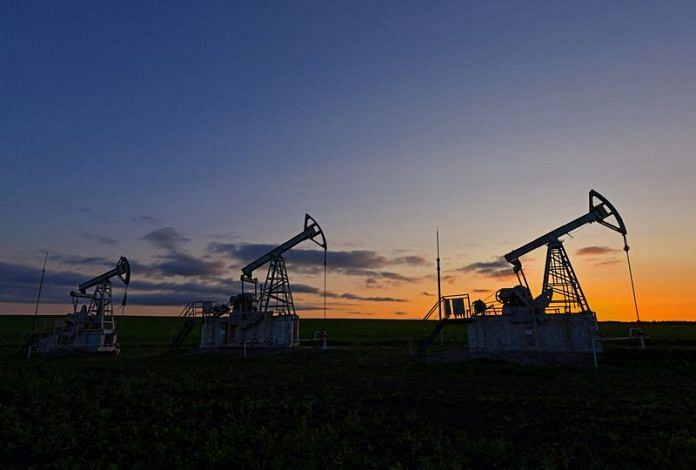By Scott DiSavino
NEW YORK (Reuters) -Oil prices climbed about 3% on Wednesday as the second straight weekly draw from U.S. crude stockpiles was bigger than expected, offsetting worries that further interest rate hikes could slow economic growth and reduce global oil demand.
Brent futures rose $1.77, or 2.5%, to settle at $74.03 a barrel, while U.S. West Texas Intermediate (WTI) crude rose $1.86, or 2.8%, to settle at $69.56.
That was the highest close for WTI since June 21 but only the highest for Brent since June 26.
The U.S. Energy Information Administration (EIA) said crude inventories dropped by 9.6 million barrels in the week ended June 23, far exceeding the 1.8-million barrel draw analysts forecast in a Reuters poll and also much bigger than the 2.8 million barrel draw a year earlier. It also exceeded the average draw in the five years from 2018-2022. [EIA/S]
“Overall, very solid numbers that kind of fly in the face of people who have been saying that the market is oversupplied. This report could be a bottom (for oil prices),” said Phil Flynn, an analyst at Price Futures Group.
Investors remained cautious that interest rate hikes could slow economic growth and reduce oil demand.
“If anybody is going to rain on the bull market it will be (U.S. Federal Reserve Chair) Jerome Powell,” Flynn said.
Leaders of the world’s top central banks reaffirmed that they see further policy tightening needed to tame inflation but believe they can achieve that without triggering recessions.
Powell did not rule out further hikes at consecutive Fed meetings while European Central Bank President Christine Lagarde confirmed expectations the bank will raise rates in July, saying such a move was “likely”.
The 12-month backwardation for Brent and WTI – a pricing dynamic indicating higher demand for immediate delivery – were both at their lowest levels since December 2022.
Analysts at energy consulting firm Gelber and Associates said that decline in backwardation suggested “diminishing worries over potential supply shortages.”
Still, some analysts expect the market to tighten in the second half of 2023 partly due to ongoing supply cuts by the Organization of the Petroleum Exporting Countries (OPEC) and their allies like Russia, collectively known as OPEC+, and Saudi Arabia’s voluntary reduction for July.
In China, the world’s second-biggest oil consumer, annual profits at industrial firms extended a double-digit decline in the first five months as softening demand squeezed margins, reinforcing hopes of more policy support for a stuttering post-COVID economic recovery.
(Additional reporting by Shariq Khan in Bengaluru, Alex Lawler in London and Mohi Narayan in New DelhiEditing by Emma Rumney, Mark Potter, David Gregorio and Cynthia Osterman)
Disclaimer: This report is auto generated from the Reuters news service. ThePrint holds no responsibilty for its content.



